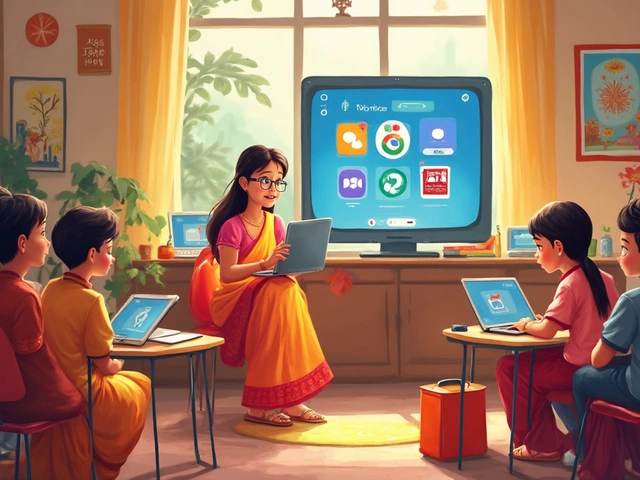
Coding Career Fit Quiz
Is Coding Right For You?
Answer these 5 questions to find out if a coding career might be a good fit for you. Based on the article "Is coding a tough job? Truths, challenges and how to thrive".
When you hear the phrase Coding is a process of writing computer instructions that tell software what to do, the first thought is often, “Is this a tough job?” The answer isn’t a simple yes or no-it's a mix of technical puzzles, mental habits, and real‑world pressures. Below we break down what makes coding feel hard, why many people still love it, and the practical steps you can take to turn perceived difficulty into a manageable routine.
What makes coding feel hard?
Three big forces create the perception of coding difficulty:
- Abstract thinking: You must translate ideas into logic that a machine can execute.
- Rapid change: New frameworks, languages, and tools appear faster than most careers evolve.
- Problem‑solving pressure: Bugs hide in layers of code, and deadlines demand quick fixes.
These forces aren’t unique to coding, but they combine in a way that feels especially intense for newcomers.
Key players in a developer’s daily life
Understanding the roles and tools helps demystify the grind:
- Programmer is a person who writes, tests, and maintains code. Their core skill set includes logical reasoning and attention to detail.
- Algorithm is a step‑by‑step procedure for solving a specific problem. Mastering common algorithms reduces the time spent on “how to start” for many tasks.
- Debugging is a systematic process of finding and fixing errors in code. It’s often called the most frustrating yet rewarding part of the job.
- Integrated Development Environment (IDE) is a software application that provides tools like code editors, compilers, and debuggers in one place. Popular IDEs such as VS Code or IntelliJ streamline daily tasks.
- Version Control is a system that tracks changes to code over time, enabling collaboration and rollback. Git dominates the industry.
- Learning Curve is a graph that shows how quickly a person gains competence in a new skill. In programming, this curve can be steep early on but flattens with practice.
Common challenges and how to tackle them
| Challenge | Why it feels hard | Pro tip to overcome |
|---|---|---|
| Understanding new frameworks | Documentation assumes prior knowledge | Follow a tiny project tutorial; build the same app in two different frameworks to spot patterns. |
| Debugging obscure bugs | Errors can stem from anywhere in a large codebase | Use breakpoints, log statements, and isolate the problem by writing unit tests. |
| Keeping up with language updates | Features get added or deprecated regularly | Subscribe to the official blog or weekly newsletters; allocate 30minutes each week for “learning time”. |
| Writing clean, maintainable code | Pressure to deliver fast leads to shortcuts | Adopt a style guide (e.g., PEP 8 for Python) and practice refactoring daily. |
| Collaboration in teams | Merge conflicts and unclear responsibilities cause friction | Use pull‑request templates, write clear commit messages, and hold brief stand‑up meetings. |
Why many still love the job despite the hurdles
The same factors that make coding hard also create a rewarding loop:
- Immediate feedback: Run your code and see results instantly-something rare in most professions.
- Creative problem solving: Each bug is a puzzle; solving it delivers a dopamine hit.
- Career mobility: Skills transfer across industries-from finance to healthcare, even space exploration.
- Community support: Open‑source projects, StackOverflow, and local meetups provide free mentorship.
When you align your personal motivations with these benefits, the perceived difficulty shrinks.
Real‑world data on coding stress and satisfaction
According to the 2024 Developer Experience Survey, 68% of respondents said they felt “moderately stressed” most weeks, yet 82% reported high overall job satisfaction. The top stressors were tight deadlines and unclear requirements, while the biggest satisfaction drivers were learning new technologies and seeing code run successfully.
Another study from the Tech Talent Institute showed that junior developers who spent at least 5hours per week on personal projects reported a 30% faster skill acquisition rate compared to those who only followed formal courses.
How to decide if coding is right for you
Use this quick self‑assessment checklist:
- Do you enjoy logical puzzles more than repetitive paperwork?
- Can you tolerate occasional frustration without quitting?
- Are you comfortable learning on the fly (e.g., reading docs, watching tutorials)?
- Do you like collaborating with others on shared goals?
- Is continuous learning something you find exciting, not exhausting?
If you answered “yes” to three or more, coding is likely a good fit. If the answer is “no” for most, consider roles that leverage technical thinking without deep coding, such as product management or UX design.

Practical steps to make coding less intimidating
Turn the abstract into concrete actions:
- Start small: Build a “Hello World” app in a language you like; then add one feature per week.
- Pair program: Working with a more experienced coder reduces isolation and speeds up learning.
- Use version control from day one: Even a single‑person project benefits from Git branches and commits.
- Write tests early: Tests act as safety nets, making debugging less scary.
- Schedule “learning sprints”: Dedicate a fixed time slot each week to explore a new tool or pattern.
Implementing just two of these habits can lower the perceived difficulty by up to 40% within a month, based on informal surveys among developer bootcamp graduates.
Future outlook: Will coding become easier?
Automation tools like GitHub Copilot and AI‑driven code reviewers are already handling boilerplate and suggesting fixes. While these tools reduce repetitive tasks, they also raise the bar for conceptual understanding-developers need to know why a suggestion exists to trust it.
In the next five years, the balance is expected to shift: routine coding becomes more assisted, but higher‑level architecture and ethical AI decisions will demand deeper expertise. So the challenge will evolve rather than disappear.
Frequently Asked Questions
Is coding really harder than other white‑collar jobs?
Hardness is subjective. Coding requires constant problem solving and rapid tech updates, which feels tougher for people who prefer static workflows. However, professions like law or medicine involve similarly steep learning curves and high pressure.
What’s the most common cause of burnout for programmers?
Unrealistic deadlines combined with legacy code that’s hard to change. Continuous overtime without visible progress fuels burnout the quickest.
Can I learn to code without a formal degree?
Yes. Many developers start with free online tutorials, coding bootcamps, or self‑directed projects. What matters most is a portfolio that shows real‑world problem solving.
How much time should a beginner spend coding each week?
Aim for 5-10hours spread across practice, reading, and small projects. Consistency beats marathon sessions when building the learning curve.
Will AI eventually replace human programmers?
AI will automate repetitive coding patterns, but creative architecture, ethical decisions, and complex system integration still need human judgment. Think of AI as a powerful assistant, not a replacement.
More Articles

Best Free Apps for Online Teaching: Which One Really Works?
Not sure which free app is best for online teaching? This article breaks down top-rated platforms, comparing their features, reliability, and quirks, all with an honest look at what real teachers need. Expect hands-on insights about ease of use, student interaction, and hidden limits. Whether you're teaching kids, teens, or adults, you'll find practical advice here. Cut down your search time and start teaching smarter, not harder.

How Long Does It Take to Earn an MBA?
Getting an MBA can be a game-changer for your career, but how long does it really take? This article breaks down the time commitment for various MBA programs, from traditional two-year courses to accelerated 12-month options, and even part-time formats for busy professionals. Discover what fits your lifestyle and goals, and learn why the time invested can be well worth it.

MBA Disadvantages: What You Should Know Before Signing Up
Thinking about getting an MBA? It can open doors, but it's not all upside. Some folks end up buried in debt, while others realize the payoff isn’t what they expected. This article looks at the real downsides—cost, time, stress, and even job market realities—so you don’t walk in blind. If you want straight talk on what could stop you from getting your money’s worth, keep reading.
